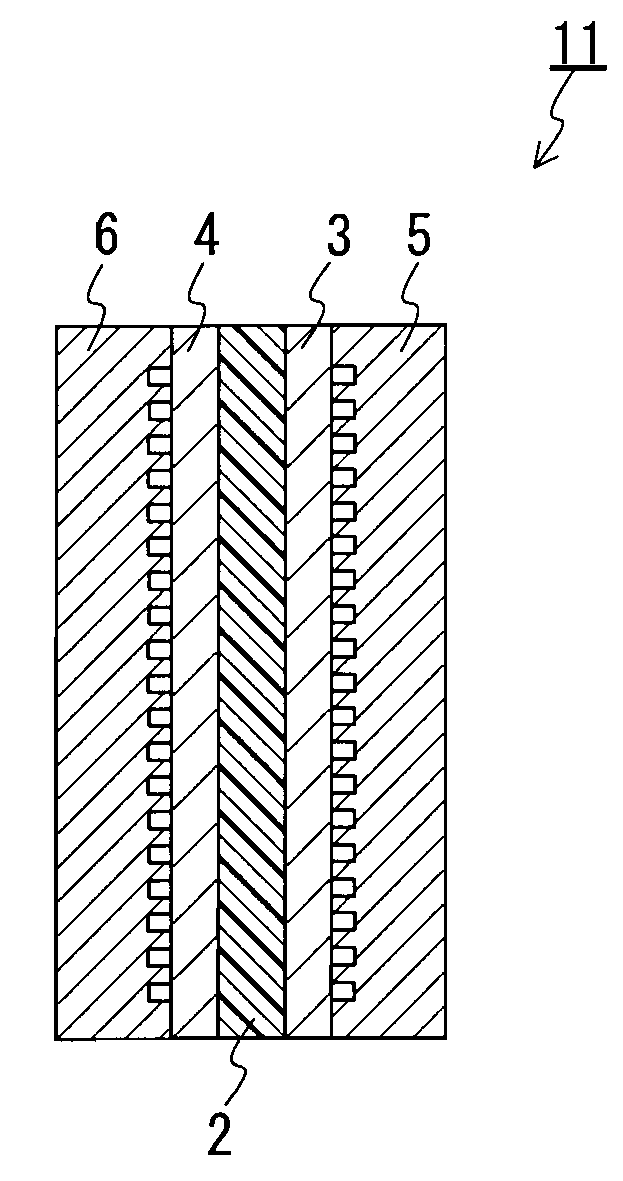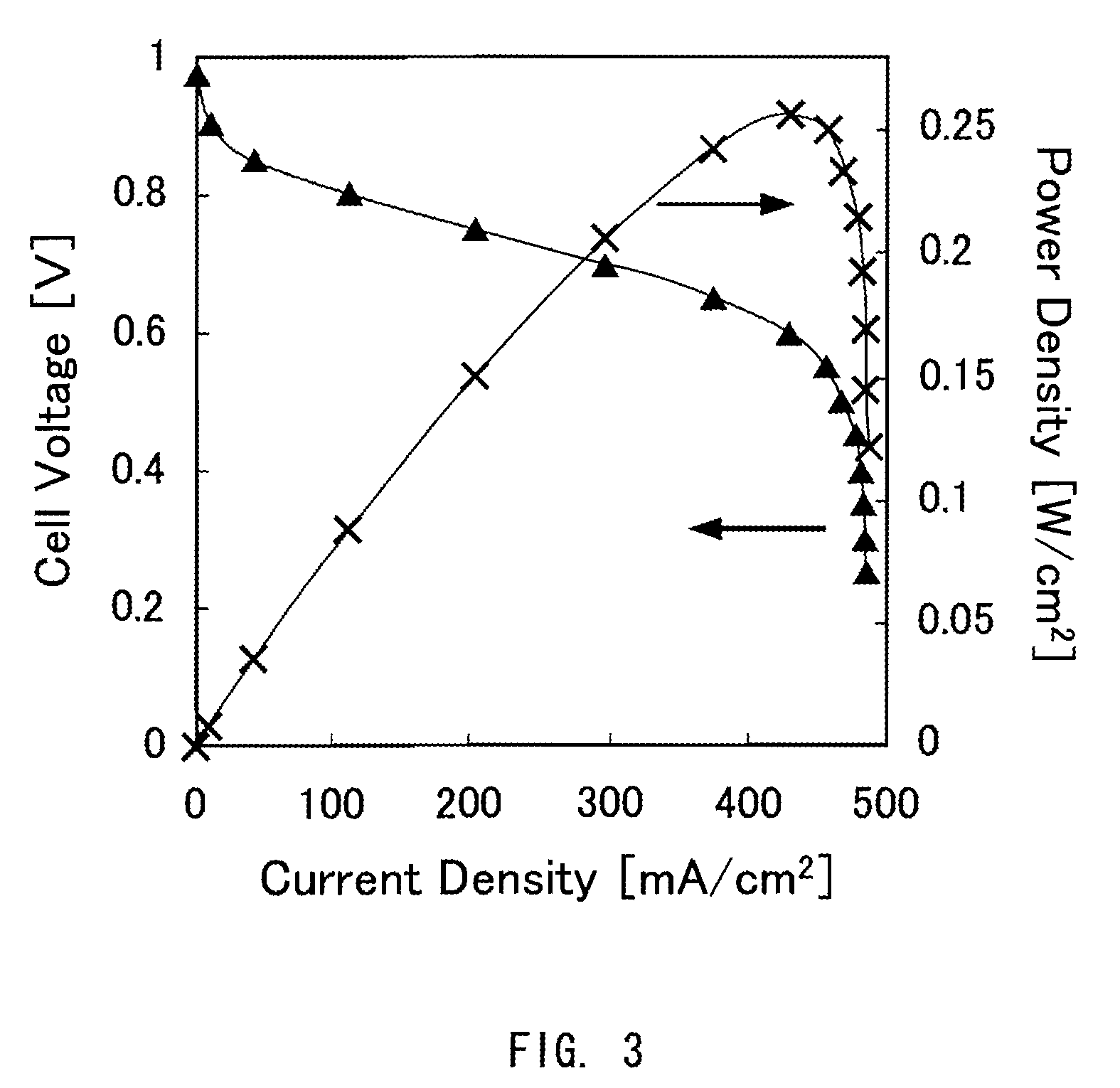Proton-conductive polymer electrolyte membrane, method of manufacturing the proton-conductive polymer electrolyte membrane, and membrane-electrode assembly and polymer electrolyte fuel cell using the proton-conductive polymer electrolyte membrane
a proton-conductive polymer and electrolyte technology, which is applied in the direction of sustainable manufacturing/processing, fused electrolyte fuel cells, and final product manufacturing, etc., can solve the problems of methanol blocking properties, high-cost electrolyte membranes can be a great barrier to commercialization of pefc, and degrade the power generation efficiency of fuel cells, etc., to achieve excellent proton conductivity and methanol blocking properties
- Summary
- Abstract
- Description
- Claims
- Application Information
AI Technical Summary
Benefits of technology
Problems solved by technology
Method used
Image
Examples
example 1
[0074]An aqueous solution of PVA (degree of polymerization: 3,500) with a concentration of 5 weight % and an aqueous solution of sodium polystyrene sulfonate (PSSNa, weight-average molecular weight of 1,000,000) with a concentration of 5 weight % were mixed at a polymer weight ratio of PVA:PSSNa=90:10, and the mixed solution was stirred until the entire solution became uniform, to prepare a cast solution for producing a precursor membrane.
[0075]Next, the cast solution obtained in the above-described manner was applied at a cast thickness of 1500 μm onto a flat substrate the surface of which was coated with Teflon (registered trademark), and the coating membrane was dried at room temperature for 2 days and further dried at 60° C. for 2 hours, to obtain a precursor membrane.
[0076]Next, the obtained precursor membrane was subjected to a heat treatment (120° C., 30 minutes), and thereafter, the heat-treated membrane was immersed in a glutaraldehyde solution (the solvent was acetone and ...
example 2
[0077]An electrolyte membrane using a crosslinked PVA as the base material and containing PSS as a water-soluble polymer electrolyte was obtained in the same manner as described in Example 1, except that the aqueous solution of PVA and the aqueous solution of PSSNa were mixed at a polymer weight ratio of PVA:PSSNa=80:20.
example 3
[0078]An electrolyte membrane using a crosslinked PVA as the base material and containing PSS as a water-soluble polymer electrolyte was obtained in the same manner as described in Example 1, except that the aqueous solution of PVA and the aqueous solution of PSSNa were mixed at a polymer weight ratio of PVA:PSSNa=70:30.
PUM
| Property | Measurement | Unit |
|---|---|---|
| weight ratio | aaaaa | aaaaa |
| weight ratio | aaaaa | aaaaa |
| weight ratio | aaaaa | aaaaa |
Abstract
Description
Claims
Application Information
 Login to View More
Login to View More - R&D
- Intellectual Property
- Life Sciences
- Materials
- Tech Scout
- Unparalleled Data Quality
- Higher Quality Content
- 60% Fewer Hallucinations
Browse by: Latest US Patents, China's latest patents, Technical Efficacy Thesaurus, Application Domain, Technology Topic, Popular Technical Reports.
© 2025 PatSnap. All rights reserved.Legal|Privacy policy|Modern Slavery Act Transparency Statement|Sitemap|About US| Contact US: help@patsnap.com



